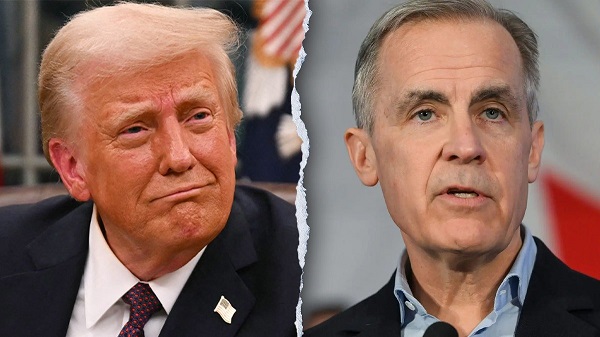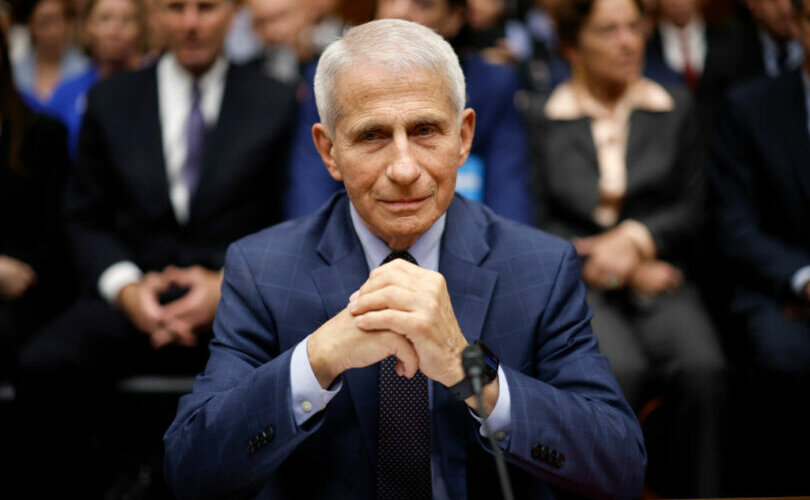Business
Federal government could save $10.7 billion by eliminating eight spending initiatives

From the Fraser Institute
By Jake Fuss and Grady Munro
During its tenure, the Trudeau government rejected any semblance of spending restraint and increased spending (and borrowing) at every turn. However, due to the rising cost of deficits and debt, coupled with pressures to increase spending in neglected areas such as defence, the next federal government—whoever that may be—may finally be forced to find savings and reduce spending.
But where to look?
The government should immediately review all spending on the basis of efficiency, value for money, and the appropriate role of government—similar to the spending review initiated by the federal Chrétien government during the 1990s. Here are some line items ripe for the cutting board.
| Spending Area | Projected Spending in 2024/25 |
|---|---|
| Regional Development Agencies | $1.5 billion |
| Government Supports for Journalism | $1.7 billion |
| Incentives for Zero-Emission Vehicles | $0.6 billion |
| 2 Billion Trees | $0.3 billion |
| Canada Infrastructure Bank | $3.5 billion |
| Strategic Innovation Fund | $2.4 billion |
| Global Innovation Clusters | $0.2 billion |
| Green Municipal Fund | $0.5 billion |
| Total Potential Savings | $10.7 billion |
Regional Development Agencies: The federal government operates seven Regional Development Agencies (RDAs), which deliver financial assistance (a.k.a. corporate welfare) to businesses. Despite spending an estimated $1.5 billion in federal taxpayer money in 2024/25, the RDAs do not provide any widespread economic benefits to Canadians. Instead, they simply redistribute those dollars to private firms and pick winners and losers in the free market. When reporting on the results, the government offers vague platitudes such as “businesses are growing” and “communities are developing economically.”
Government Money for Journalism: In 2024/25 the federal government spent an estimated $1.7 billion to support Canadian journalism including the operating costs (e.g. wages) of newspapers and broadcast outlets such as the CBC. Despite these efforts, and the considerable price tag, hundreds of news organizations have closed since 2020 and layoffs have persisted—largely due to the disruptive effects of the Internet. Simply put, the traditional media sector is in decline, and the government’s costly attempts to reverse this trend have been ineffective.
Federal Support for Electric Vehicle Purchases: As part of its push to reduce emissions, the federal government will spend an estimated $587.6 million to subsidize electric vehicle (EV) purchases in 2024/25. This spending is inefficient and wasteful. EV incentives are expensive—costing a minimum of $177 per tonne of greenhouse gas (GHG) emissions, whereas the federal carbon tax in 2024 was much cheaper at $80 per tonne of GHG emissions.
The 2 Billion Trees (2BT) Program: Ottawa has earmarked $3.2 billion for the program from 2021 to 2031, with expenses in 2024-25 alone estimated at $340 million. While laudable in theory, the program has been poorly executed. In its first two years, the federal government spent roughly 15.0 per cent of the total budget to plant merely 2.3 per cent of the two billion trees. In fact, the 2BT program has used trees planted under a different program to artificially boost its numbers.
Canada Infrastructure Bank (CIB): Established in 2017, the CIB is a federal Crown corporation tasked with investing and attracting investment in Canadian infrastructure projects. Over its more than seven-year lifespan, the CIB has approved approximately $13.2 billion in investments across 76 projects (as of July 2024). In 2024/25, federal CIB funding will equal $3.5 billion. Though multiple problems plague the CIB, chief among them is its inefficiency in advancing projects. As of July 2024, only two CIB-funded projects had been completed. This lack of progress was a chief concern in a previous House of Commons committee report that made the sole recommendation to abolish the CIB.
Strategic Innovation Fund (SIF): With federal grants and contributions, the SIF funds projects based on their purported potential to deliver innovation and economic benefits for Canadians. While Canada certainly suffers from a lack of innovation, this spending (to the tune of $2.4 billion in 2024/25) simply shifts jobs and investment dollars away from other firms and industries—with no net benefit for the overall economy. Similarly, increased government spending on innovation may simply crowd out private-sector investment, leading to no net increase in innovation investment.
Global Innovation Clusters (GIC): The federal government launched the GIC program, like the SIF, to address the lack of innovation in Canada. The government expects to disperse $202.3 million through the GIC in 2024/25 alone, targeting the five “clusters” of business activity the government chose in 2018. But again, because the clusters represent specific industries and technologies (e.g. artificial intelligence, marine technologies, manufacturing), the federal government is incentivizing firms to spend time and resources modifying their businesses to secure grant rather than focusing on the development of new/improved goods and services.
Green Municipal Fund (GMF): The GMF spends federal tax dollars on municipal projects that purportedly accelerate the transition to net-zero greenhouse gas (GHG) emissions. In 2024/25, the federal government will contribute $530 million to the fund. While the fund maintains emissions-reduction targets for projects, several projects approved for funding will not reduce GHG emissions in any measurable way—for example, “climate-friendly” home tours and funding for climate advocacy groups in Ottawa. In other words, the GMF is spending taxpayer dollars on projects that make no apparent progress towards the GMF’s stated goal.
In total, these eight spending initiatives add up to approximately $10.7 billion in potential savings for the 2024-25 fiscal year alone. And remember, these are just the low-hanging fruit. The next federal government can find further savings through a more comprehensive review of all spending.
2025 Federal Election
MEI-Ipsos poll: 56 per cent of Canadians support increasing access to non-governmental healthcare providers

-
Most believe private providers can deliver services faster than government-run hospitals
-
77 per cent of Canadians say their provincial healthcare system is too bureaucratic
Canadians are increasingly in favour of breaking the government monopoly over health care by opening the door to independent providers and cross-border treatments, an MEI-Ipsos poll has revealed.
“Canadians from coast to coast are signalling they want to see more involvement from independent health providers in our health system,” explains Emmanuelle B. Faubert, economist at the MEI. “They understand that universal access doesn’t mean government-run, and that consistent failures to deliver timely care in government hospitals are a feature of the current system.”
Support for independent health care is on the rise, with 56 per cent of respondents in favour of allowing patients to access services provided by independent health entrepreneurs. Only 25 per cent oppose this.
In Quebec, support is especially strong, with 68 per cent endorsing this change.
Favourable views of accessing care through a mixed system are widespread, with three quarters of respondents stating that private entrepreneurs can deliver healthcare services faster than hospitals managed by the government. This is up four percentage points from last year.
Countries like Sweden and France combine universal coverage with independent providers and deliver faster, more accessible care. When informed about how these health systems run, nearly two in three Canadians favour adopting such models.
The poll also finds that 73 per cent of Canadians support allowing patients to receive treatment abroad with provincial coverage, which could help reduce long wait times at home.
Common in the European Union, this “cross-border directive” enabled 450,000 patients to access elective surgeries in 2022, with costs reimbursed as if they had been treated in their home country.
There’s a growing consensus that provincial healthcare systems are overly bureaucratic, with the strongest agreement in Alberta, B.C., and Quebec. The proportion of Canadians holding this view has risen by 16 percentage points since 2020.
Nor do Canadians see more spending as being a solution: over half say the current pace of healthcare spending in their province is unsustainable.
“Governments shouldn’t keep doubling down on what isn’t working. Instead, they should look at what works abroad,” says Ms. Faubert. “Canadians have made it clear they want to shift gears; now it’s up to policymakers to show they’re listening.”
A sample of 1,164 Canadians aged 18 and older was polled between March 24th and March 28th, 2025. The margin of error is ±3.3 percentage points, 19 times out of 20.
The results of the MEI-Ipsos poll are available here.
* * *
The MEI is an independent public policy think tank with offices in Montreal, Ottawa, and Calgary. Through its publications, media appearances, and advisory services to policymakers, the MEI stimulates public policy debate and reforms based on sound economics and entrepreneurship.
Education
Schools should focus on falling math and reading skills—not environmental activism

From the Fraser Institute
In 2019 Toronto District School Board (TDSB) trustees passed a “climate emergency” resolution and promised to develop a climate action plan. Not only does the TDSB now have an entire department in their central office focused on this goal, but it also publishes an annual climate action report.
Imagine you were to ask a random group of Canadian parents to describe the primary mission of schools. Most parents would say something along the lines of ensuring that all students learn basic academic skills such as reading, writing and mathematics.
Fewer parents are likely to say that schools should focus on reducing their environmental footprints, push students to engage in environmental activism, or lobby for Canada to meet the 2016 Paris Agreement’s emission-reduction targets.
And yet, plenty of school boards across Canada are doing exactly that. For example, the Seven Oaks School Division in Winnipeg is currently conducting a comprehensive audit of its environmental footprint and intends to develop a climate action plan to reduce its footprint. Not only does Seven Oaks have a senior administrator assigned to this responsibility, but each of its 28 schools has a designated climate action leader.
Other school boards have gone even further. In 2019 Toronto District School Board (TDSB) trustees passed a “climate emergency” resolution and promised to develop a climate action plan. Not only does the TDSB now have an entire department in their central office focused on this goal, but it also publishes an annual climate action report. The most recent report is 58 pages long and covers everything from promoting electric school buses to encouraging schools to gain EcoSchools certification.
Not to be outdone, the Vancouver School District (VSD) recently published its Environmental Sustainability Plan, which highlights the many green initiatives in its schools. This plan states that the VSD should be the “greenest, most sustainable school district in North America.”
Some trustees want to go even further. Earlier this year, the British Columbia School Trustees Association released its Climate Action Working Group report that calls on all B.C. school districts to “prioritize climate change mitigation and adopt sustainable, impactful strategies.” It also says that taking climate action must be a “core part” of school board governance in every one of these districts.
Apparently, many trustees and school board administrators think that engaging in climate action is more important than providing students with a solid academic education. This is an unfortunate example of misplaced priorities.
There’s an old saying that when everything is a priority, nothing is a priority. Organizations have finite resources and can only do a limited number of things. When schools focus on carbon footprint audits, climate action plans and EcoSchools certification, they invariably spend less time on the nuts and bolts of academic instruction.
This might be less of a concern if the academic basics were already understood by students. But they aren’t. According to the most recent data from the Programme for International Student Assessment (PISA), the math skills of Ontario students declined by the equivalent of nearly two grade levels over the last 20 years while reading skills went down by about half a grade level. The downward trajectory was even sharper in B.C., with a more than two grade level decline in math skills and a full grade level decline in reading skills.
If any school board wants to declare an emergency, it should declare an academic emergency and then take concrete steps to rectify it. The core mandate of school boards must be the education of their students.
For starters, school boards should promote instructional methods that improve student academic achievement. This includes using phonics to teach reading, requiring all students to memorize basic math facts such as the times table, and encouraging teachers to immerse students in a knowledge-rich learning environment.
School boards should also crack down on student violence and enforce strict behaviour codes. Instead of kicking police officers out of schools for ideological reasons, school boards should establish productive partnerships with the police. No significant learning will take place in a school where students and teachers are unsafe.
Obviously, there’s nothing wrong with school boards ensuring that their buildings are energy efficient or teachers encouraging students to take care of the environment. The problem arises when trustees, administrators and teachers lose sight of their primary mission. In the end, schools should focus on academics, not environmental activism.
-

 2025 Federal Election2 days ago
2025 Federal Election2 days agoNo Matter The Winner – My Canada Is Gone
-

 2025 Federal Election2 days ago
2025 Federal Election2 days agoInside Buttongate: How the Liberal Swamp Tried to Smear the Conservative Movement — and Got Exposed
-

 2025 Federal Election2 days ago
2025 Federal Election2 days agoASK YOURSELF! – Can Canada Endure, or Afford the Economic Stagnation of Carney’s Costly Climate Vision?
-

 2025 Federal Election2 days ago
2025 Federal Election2 days agoCSIS Warned Beijing Would Brand Conservatives as Trumpian. Now Carney’s Campaign Is Doing It.
-

 Alberta2 days ago
Alberta2 days agoProvince to expand services provided by Alberta Sheriffs: New policing option for municipalities
-

 Alberta2 days ago
Alberta2 days agoMade in Alberta! Province makes it easier to support local products with Buy Local program
-

 International2 days ago
International2 days agoTulsi Gabbard tells Trump she has ‘evidence’ voting machines are ‘vulnerable to hackers’
-

 COVID-191 day ago
COVID-191 day agoCOVID virus, vaccines are driving explosion in cancer, billionaire scientist tells Tucker Carlson












